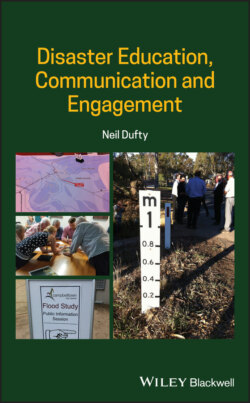Читать книгу Disaster Education, Communication and Engagement - Neil Dufty - Страница 21
2.3 Engagement
Оглавление‘Engagement’ is used here as a generic, inclusive term to describe the broad range of interactions between people. Based on the discussion about ‘community’ in Chapter 1, ‘community engagement’ is therefore a planned process with the specific purpose of working with identified groups of people, whether they are connected by geographic location, special interest, or affiliation, to address issues affecting their wellbeing (Queensland Department of Emergency Services 2001). It is sometimes called ‘civic engagement’ or ‘public engagement’.
In disaster management literature, in some cases the term ‘stakeholder’ is used to describe sections of a community. On the other hand, there may be ‘stakeholders’ other than those in the at-risk community (geographically located), and thus community engagement can be viewed as a subset of ‘stakeholder engagement’. For example, emergency managers, government agencies, and humanitarian organisations are stakeholders usually outside of the at-risk community and may also be the focus of the engagement. Stakeholders can then be defined as any group or individual who is affected by or can affect the achievement of the objectives of the engagement (Freeman 1984).
There are numerous approaches to community engagement, several of which have been adapted to assist in disaster management and disaster-related learning. Five of these broad approaches are described below.
